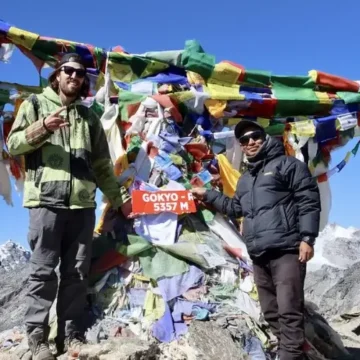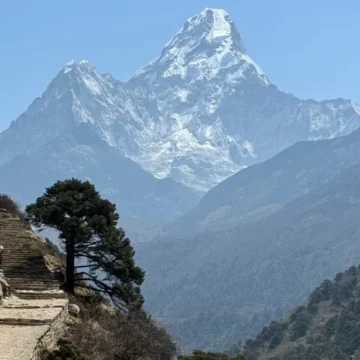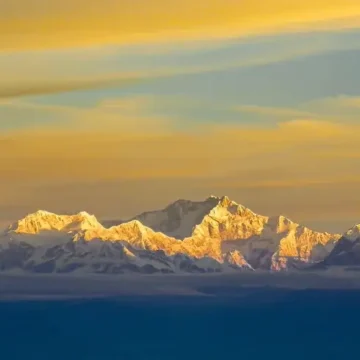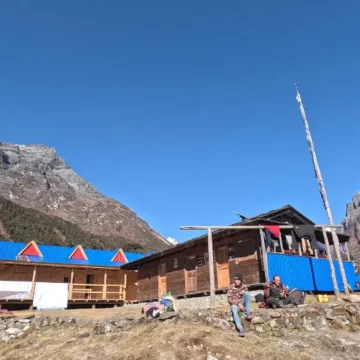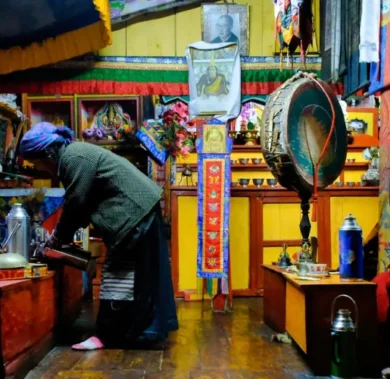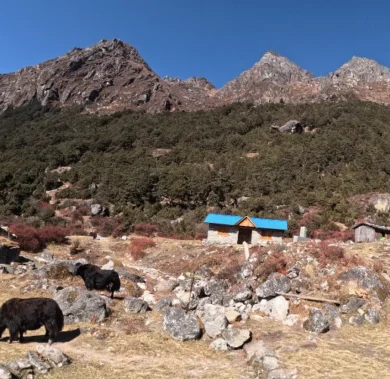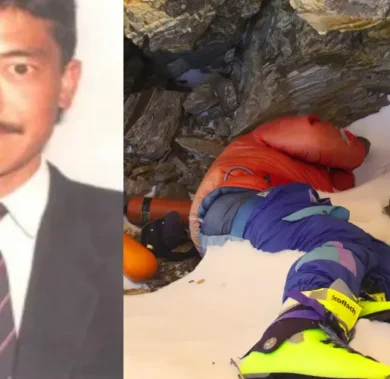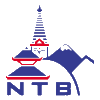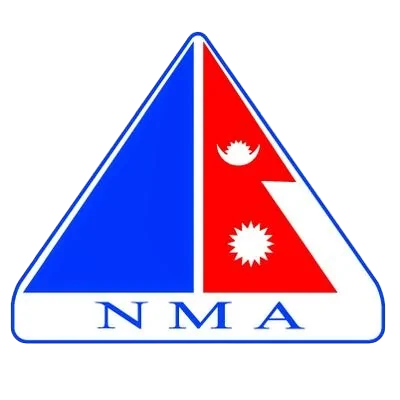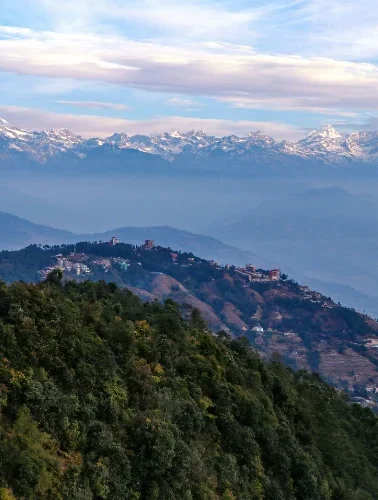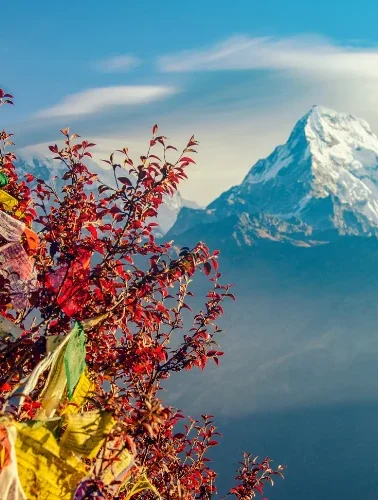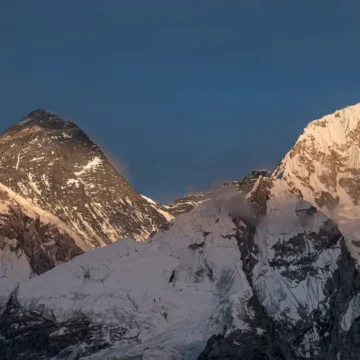
Kanchenjunga Circuit Camping Trek for True Adventurers
Table of Contents
For any trekker out there looking for raw adventure trekking in the rugged, rocky terrains of the Himalayas, the Kanchenjunga Camping Trek might be the answer for them.
Kanchenjunga trekking provides a wild, wilderness, and soul-relieving adventure. Unlike other crowded and commercialised trek routes like Everest and the Annapurna region, the Kanchenjunga Base Camp Trek route is less visited and peaceful, yet features some of the best views.
The Kanchenjunga Circuit Camping Trek overwhelms trekkers with unspoilt terrain, remoteness, and authentic local cultures. It takes its admirers into the heart of Nepal’s most remote villages and their lifestyle.
The route is dotted with vibrant rhododendron forests, icy moraines, and glacier-fed rivers. Instead of well-facilitated lodges, you’ll find friendly, hospitable teahouses on the route. It is one of the best camping treks in Nepal.
Teahouses, placed beside roaring rivers, might not feature modern facilities and a very comfortable bed, but the view of alpine meadows facing the mighty Kanchenjunga peak compensates for it all. It is just majestic, filling your heart with a different kind of calm.

Highlights of Kanchenjunga Camping Trek
Some of the major highlights of the Kanchenjunga Camping Trek are:
- Dual base camps: Visit both North and South Kanchenjunga Base Camps.
- Views of the Kanchenjunga peak (8,586m) and surrounding giants.
- Close-up encounters with Tibetan-style villages like Ghunsa and Yamphudin.
- Camping in remote glacial valleys such as Lhonak and Ramche.
- Wildlife sightings: Red pandas, snow leopards (rare), and blue sheep.
- Silence and serenity: Away from the rush of commercial treks like the Everest Base Camp trek.
- Explore less-trodden trails: The Kanchenjunga base camp trek route is far more untouched than popular trekking regions.
- Intimate connection with nature: From sleeping near waterfalls to waking up beside glacier-fed rivers.
- Opportunity to learn wilderness survival skills: Setting up camps, managing supplies, and navigating remote routes.
- Immersion in Eastern Nepalese culture: Engage with Limbu, Rai, and Tibetan-influenced communities that are rarely visited by outsiders.

What are the advantages of camping?
It’s not black and white, or advantages and disadvantages when camping trek in the Kanchenjunga region. Usual and camping both have their advantages.
Moreover, the Kanchenjunga Camping Trek offers a unique range of benefits that trekkers find amusing.
- Freedom to explore: You can venture beyond the fixed stops on the traditional Kanchenjunga base camp trek route.
- Access to remote wilderness: Camp deep into areas like Yalung Valley, where no lodges exist.
- Cultural privacy: Experience local interactions without the teahouse crowd.
- Food control: Carry your own meals, stick to your diet, and enjoy hot meals prepared fresh on-site.
- Eco-friendliness: With proper waste management, camping can have less impact on local resources.
What does it feel like camping in Kanchenjunga?
However, again, skipping this teahouse and choosing to camp in Kanchenjunga adds a little bit of spice to your Himalayan adventure.
Camping in Kanchenjunga is about accessing hidden trails, experiencing true isolation, and immersing yourself in the undisturbed Himalayan landscape.
Every day, you wake up to some of the stunning mountain views and sleep under billions of twinkling stars.
What’s more exciting about Kanchenjunga Base Camp Trek Camping is that you eat what you carry. All the raw food and cooking ware are carried by your porter and prepared by your trek cook. It’s fresh and healthy, giving you a raw taste of Nepali cuisine.
Best Scenic Camping Spots with Safe Terrain
Basically, every corner, every cliff, and every village is outstanding. Trekkers, whether on a camping trek or a classical teahouse trek, are rewarded with panoramic views of the Janu/Kumbakarna Himal, Yalung Himal, Makalu, the Twins Mountain, the Kanchenjunga massif, and many more.
During the Kanchenjunga Camping Trek, your guide stops somewhere where you can enjoy the most scenic and surreal scenery of the Himalayas.
Your camping team finds a flat and safe spot near a water source and sets up the tent. Then you can savour the food prepared by your camping cook. Crisp air, filled with the fragrance of cypress and rhododendron trees, adds an extra pinch of salt to your food.
There are several such spots on the circuit route. Some of the best scenic camping locations, free from the risk of landscapes and providing natural wind protection, on the trek are:
Sekathum
Camp beside the riverbank of Ghunsa Khola, near Sekathum village. It is known as a friendly village where trekkers can enjoy the river view and the green mountain view surrounding the village.
Amjilosa
It is one of the first camping locations in the Kanchenjunga Base Camp Camping Trek. The camping area is surrounded by a forest overlooking the valley below. It is a beautiful, safe, and protected camping location, a quiet spot away from the trail.
Camping near Sherpa Village. Trekkers can enjoy the jungle view and the Lowo Danda view, and maybe get a chance to interact with a local and listen to their stories.
Gyabla
Perched slightly higher, it lies in a narrow, forested gorge with lush greenery and nearby freshwater rivers in Nepal. The area is peaceful and ideal for acclimatisation.
Camps are pitched beside the river and the stupa near Gyabla Village. You can enjoy river views and occasional wildlife spotting.
Ghunsa
It is a somewhat developed Sherpa village with both teahouse and camping options available. It is one of the few places where you can not only recharge physically but also electronically.
The campsite is located in the middle of the village. Here, trekkers can catch a glimpse of Nyukla Lachung (6012 m) Himal. It is an acclimatisation village, so you can interact with locals or go sightseeing and visit monasteries.
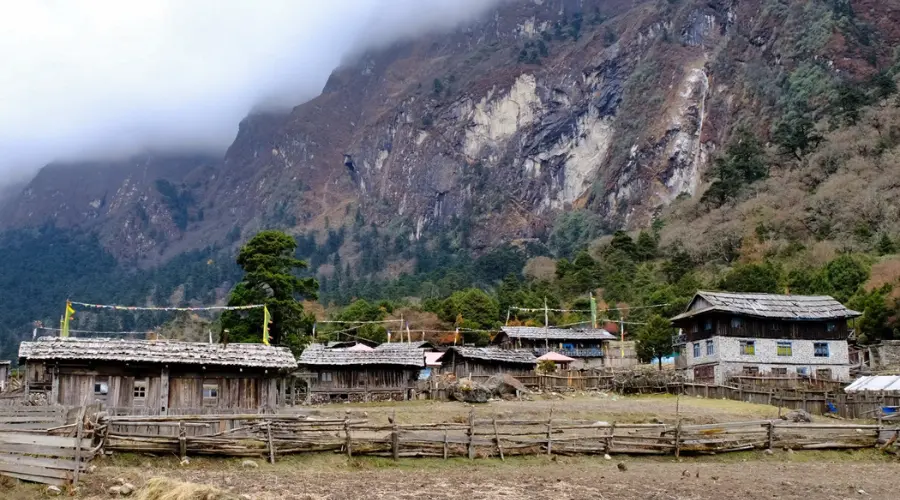
Khambachen
It is a transitional village into a vast glacial valley surrounded by towering cliffs and rock walls.
Along with the view of Kumbakarna Glacier and Kumbakarna Himal, you can enjoy camping near Khambachen Village.
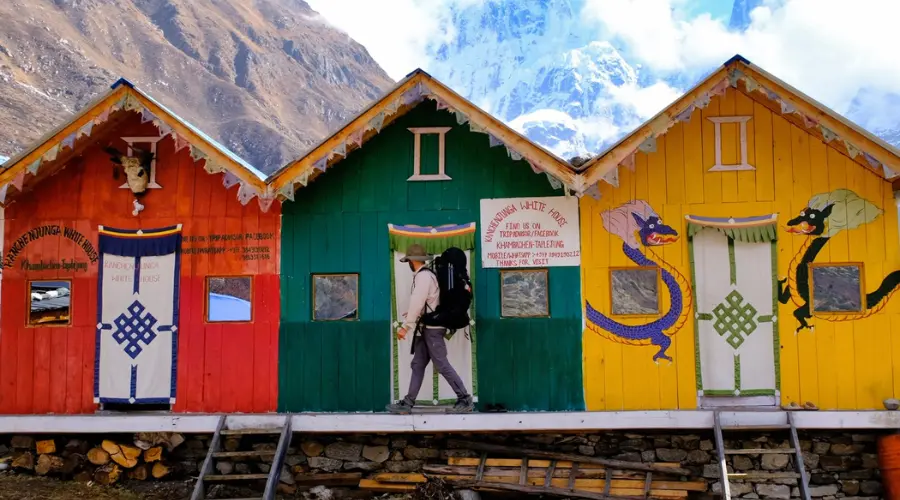
Lhonak
Located in a wide, windswept plateau, Lhonak (4792 m/15,722 ft) is one of the best camping spots in the entire trek route. Despite its high altitude, the area is relatively flat, and the view of the Kanchenjunga massif is simply unmatched.
You’ll be camping beside the teahouse here. It is especially known for Kanchenjunga Glacier and Kanchenjunga massif views.
Sele Le Base Camp/Sele Le Phedi
Just before challenging Sele Le Pass (4290 m/14,074 ft), its base is one of the most remote sections. It has no teahouse and only a few trekkers.
There is a camping site near a teashop just before the Sele Le Pass, where you can set up the camp. From the base, you can see Sele Le Pass and appreciate the alpine forest view.
Tseram
Located on the route to Yalung Glacier, it features wide meadows and forest clearings, making it suitable for large groups. It is not only scenic but also a great place for acclimatisation.
The camp is pitched near beautiful Tseram Village, surrounded by sub-alpine forests on either side.
Ramche
Near Kanchenjunga South Base Camp, Ramche is a quiet, secluded, and remote village near the outlet of Yalung Glacier. With its soft alpine terrain and magnificent views, it’s often considered one of the best campsites on the southern side.
Here, camp is set up in a vast pastureland, where yaks graze. You can also see blue sheep and mountain Tahr roaming around.
Tortong
With wide clearings, the soothing sound of rivers, and surrounded by dense forest, Tortong is ideal for camping and photography.
Your camp is pitched near the village, near a colourful rhododendron forest. From the top, you can see the villages below.
Yamphudin
It is a big village on your trek route. Himalayan Masters’s team will set up the tent beside one of the teahouses.
You can have a village tour here. If there is any festival or any special occasion, you can also participate in it. Trekkers enjoy souvenir shopping here, along with a celebratory drink, 1 or 2 cups of Tongba, as a celebration of successfully completing the Kanchenjunga Camping Trek.
Challenges of Camping in This Region – Water Sources and Hygiene
Despite all the extraordinary experiences, the Kanchenjunga Circuit trek camping comes with its own challenges. The most challenging part of the entire camping is the logistics.
Logistics
For well-managed camping treks in the Kanchenjunga region, you will need to hire a whole team of porters, guides, cooks, and sometimes even local Sherpas for their insight, knowledge, and assistance with setting up camps.
Trekking Team
For a single trekker, you’ll need at least 2-3 porters, a guide, and a cook. And everything should be carried and cooked personally. All these factors can significantly increase the overall Kanchenjunga Base Camp Trek cost.
Water Source
Likewise, another challenging part of the Kanchenjunga Camping Trek is finding a clean and drinkable water source. Along with water sources, it is also important that there is enough flat space for camping. Always remember to purify water with purification tablets or use any filtration process.
Hygiene
Your hygiene must be your topmost priority. Kanchenjunga follows the ‘Leave No Trace’ principle. So, do not litter around. For hygiene purposes, it is advised to carry a portable toilet.
Permits
Also, you will need to issue the Kanchenjunga Restricted Area Permit and the Kanchenjunga Conservation Area Project Permit, which cost $100 for the first four weeks and $20 per person, respectively.
All governmental documentation and all could be really challenging for you. However, you do not have to worry about them. We, Himalayan Masters, will arrange them for you, inclusive of the trip package.
Elevation
Probably elevation is the most common challenge that every trekker in the Kanchenjunga Trek experiences. With elevation reaching above 5000 meters (16,404 ft), specifically 5143 meters (16,873 ft) at Kanchenjunga North Base Camp (the highest point of the trek), there is a constant risk of altitude sickness.
Weather and Temperature
With high elevation, the nights can get cold, sometimes dropping to below -10 °C. In such extreme conditions, trekkers get exhausted quickly. Even the strongest might give up.
Isolation
Though a few may enjoy isolation. But being isolated from the modern world for about 3 weeks could be really challenging for many. Due to the remote location and isolation, even operating emergency communication or evacuation might be difficult.
The most attractive factor of this factor can be risky sometimes.

Gear Checklist for Camping Treks
For a safe and comfortable trekking experience, it is essential that you pack wisely. If not life-threatening, missing camping essentials can cause discomfort, or buying them between routes could be costly.
Here’s what you must not forget when packing for the Kanchenjunga Camping Trek.
Tent & Sleeping Setup:
- Four-season mountain tent (windproof and snow-resistant)
- Sleeping bag rated to -15°C or lower (down or synthetic)
- Foam mat or inflatable mattress for insulation
- Groundsheet or tent footprint to protect from moisture
Cooking & Kitchen Gear:
- Lightweight kerosene or gas stove with fuel supply
- Cooking pots, pans, kettle (lightweight aluminium or titanium)
- Utensils kit: plates, bowls, mugs, cutlery for a group
- Water purification system: chlorine tablets, filters, or UV systems
- Washing bowl, biodegradable soap
Dining & Utility:
- Dining tent (for group use)
- Kitchen tent and storage
- Portable toilet tent with waste bags (mandatory in remote sites)
- Solar charger or battery pack (for electronics)
- Headlamp with extra batteries
Clothing & Personal Items:
- Layered clothing system (base, mid, and shell layers)
- Down jacket, windproof pants, rain gear
- Woollen socks, gloves, warm hats
- Trekking poles, gaiters, sturdy hiking boots
- Sunglasses, sunscreen, lip balm
Extras & Safety:
- Personal first-aid kit
- Trekking map and GPS
- Communication device (satellite phone or walkie-talkie)
- Dry sacks or waterproof bags
Note: Firewood is not allowed to be collected inside the Kanchenjunga Conservation Area. Only portable fuel systems are permitted.
Camping Regulations in Kanchenjunga Conservation Area
Kanchenjunga is a restricted area that falls within the Kanchenjunga Conservation Area. So, if you are planning to camp here, there are certain rules and regulations that you need to follow. These regulations are designed to preserve the fragile alpine ecosystem and honour local cultural values.
Here are the key regulations to follow:
- Kanchenjunga Base Camp Trek Permits are mandatory: Trekkers must obtain both a Kanchenjunga Conservation Area entry permit (KCAP) and a Restricted Area Permit through a registered trekking agency.
- No firewood collection: Gathering wood inside the conservation area is strictly prohibited. Only portable fuel like gas or kerosene stoves may be used.
- Use portable toilet tents: Human waste must be disposed of responsibly using portable toilet tents, especially in remote areas.
- Leave No Trace: All garbage must be packed out. Do not bury or burn waste.
- Avoid sacred and grazing areas: You are not allowed to camp near monasteries, mani walls, or yak grazing grounds.
- Respect local trails and customs: Avoid blocking traditional paths or community-used land.
- Noise pollution control: Keep noise levels minimal to protect wildlife and respect fellow trekkers.
- Camp in designated areas when possible: If a site is marked for camping, use it instead of disturbing untouched ground.
Following these rules helps conserve the beauty of the region and fosters goodwill with local communities, ensuring this extraordinary experience remains accessible to responsible trekkers.
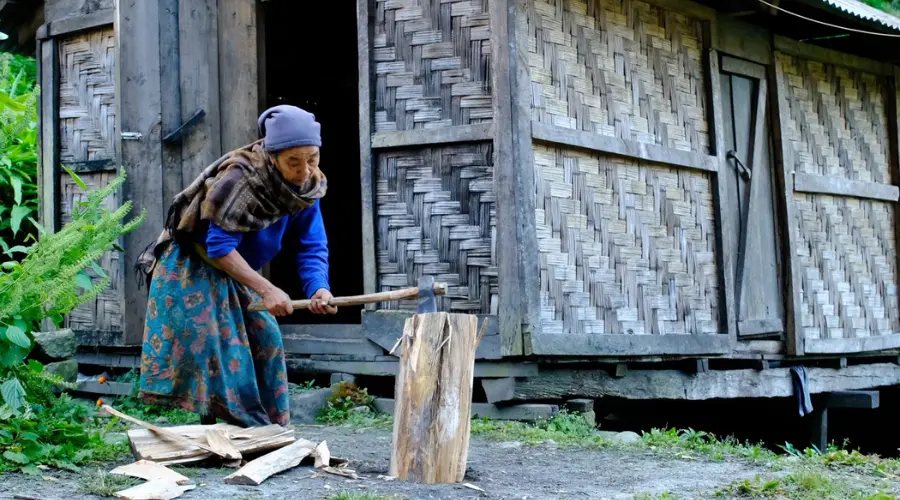
How to Plan a Camping-Based Kanchenjunga Trek?
Proper planning and preparation ensure a successful Kanchenjunga Camping Trek. You need to be prepared mentally, physically, and logistically.
Here are a few tips to plan for a journey of a lifetime.
Mental and Physical Preparation
It is a long and straining trek in a remote village route. So, you need to be mentally prepared for anything that comes your way. Additionally, engage in stamina, strength, and core-building exercises for at least 3 months before the trek.
Choose the Right Itinerary
Choosing the right Kanchenjunga Base Camp Trek itinerary that suits your body and how long you plan on trekking is very important. However, make sure your itinerary includes some of the top camping locations, such as Amjilosa, Lhonak, Sele Le, and Ramche, among others.
Further, including acclimatisation days in your itinerary is a must.
Permits and Paperwork
RAP and KCAP are compulsory for the Kanchenjunga Base Camp Trek permit. Additionally, make sure you have insurance that covers high-altitude treks above 5000 meters. You can also carry a copy of your passport, in case.
Your Trekking Support Team
A camping trek is impossible without a bona fide camping crew. You need to have a licensed guide, a cook, a kitchen assistant, and porters. Hiring yaks or mules is optional.
Camping Gear
It is essential that you pack according to the season you are trekking in. For winter trekking, an extra layer of jacket or thermals and a sleeping bag liner are recommended. Likewise, for monsoon trekking, waterproof gear and insect repellents are a must.
Food Planning and Resupply
You might not find shops along the route. So, it is essential that you carry enough dry and packed meals and resupply whenever possible. Packing nuts, pastes, oats, soup mixes, and tea are good choices.
Wildlife and Safety
Encounters with snow leopards or red pandas are rare but possible. Moreover, in case of wildlife encounters, do not panic or threaten them. Let them pass by. Meanwhile, you can appreciate them and capture the moment through a camera lens, if possible.
Additionally, avoid camping near cliffs or avalanche-prone zones. Carry a whistle, first aid, and use bear-proof food.
Hygiene and Waste
Use biodegradable soap, carry out all garbage, and use toilet tents with sealed disposal bags.
Best Time to Camp in Kanchenjunga
Typically, spring (March to May) and autumn (September to November) are considered the best times to camp in Kanchenjunga. They have a stable climate and clear skies, offering some of the best views. Avoid monsoon and winter treks as far as possible due to leeches, landslides, or extreme cold.
Local Culture and Etiquette
Respect locals and their traditions. Don’t pitch tents near sacred landmarks. And always ask for permission before photographing locals, and always greet with ‘Namaste’.
Know Your Trail
Do some research about the trail and map out water sources, altitudes, and camping sites. Arrange transport and all other logistics. Or you can leave all logistics to your trek organisers.
Power, Wi-Fi and Communication
Most of the camping trek routes don’t have Wi-Fi facilities. Though the electricity is available, there might be frequent electric outages. So, carrying a solar charger, power bank or extra battery is recommended.
For communication, local network providers like NTC offer network coverage. However, the connection might be disrupted or lost in some of the sections. So, we advise you to carry a satellite phone or a walkie-talkie for reliable communication and in case of emergencies.
Pro Tips for Kanchenjunga Camping Trek
- Start with Shorter Treks First: Before attempting Kanchenjunga, test your comfort with camping on treks like Mardi Himal or Langtang Valley.
- Hire Locals Through Registered Agencies: It supports the economy and ensures you have someone familiar with the region’s culture and trails.
- Double Up on Batteries: Cold drains power fast. Bring backup batteries and keep them close to your body at night.
- Weatherproof Your Pack: Sudden snow or rain is common. Use dry sacks or pack liners to protect clothes and electronics.
- Plan Rest Days: Always add 2–3 extra days to your itinerary to deal with delays from altitude sickness or bad weather.
- Sleep High, Camp Low (When Possible): For better acclimatisation, gain elevation during the day and camp slightly lower at night.
- Practice Camp Setup Before the Trek: Knowing how to pitch your tent quickly in harsh conditions can be a lifesaver.
- Don’t Overpack Food: Plan calorie-dense but lightweight meals. Instant noodles, dry fruits, oatmeal, and soup mixes are ideal.
- Preload Offline Maps: Download GPS maps in advance (e.g., Maps.me, Gaia) since you’ll have no signal for days.
- Learn Basic Nepali Phrases: Even simple words like “Pani cha?” (Is there water?) or “Dhanyabad” (Thank you) go a long way with locals.
- Ensure Your Trek: Make sure your travel insurance covers high-altitude trekking (up to 5,200 m), emergency evacuation, and camping expeditions.
- Early Morning Starts Are Best: Begin your trek early to avoid afternoon winds and cloud cover and to secure good camping spots.
- Listen to Your Body: If you’re feeling symptoms of AMS (Acute Mountain Sickness), descend and don’t push for the summit or base camp.
Kanchenjunga Camping Trek With Himalayan Masters
Himalayan Masters is the best trekking company in Kathmandu, Nepal. We offer the most organised treks and camping experiences in the Himalayas.
If you’re planning an adventurous Kanchenjunga camping trip, rest assured that we provide the most organised camping trek at an affordable price. We will take care of all the logistics, permits, transportation, experienced camping guides, porters, and other camping team members.
If you have the slightest confusion or query, please feel free to contact us at our email ([email protected]) or WhatsApp us at +977-9823636377.
Want to know more?
Speak to an Expert


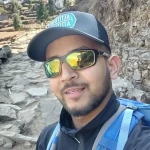


Sandip Dhungana
Nepal 🇳🇵
Whatsapp: +977-9823636377


